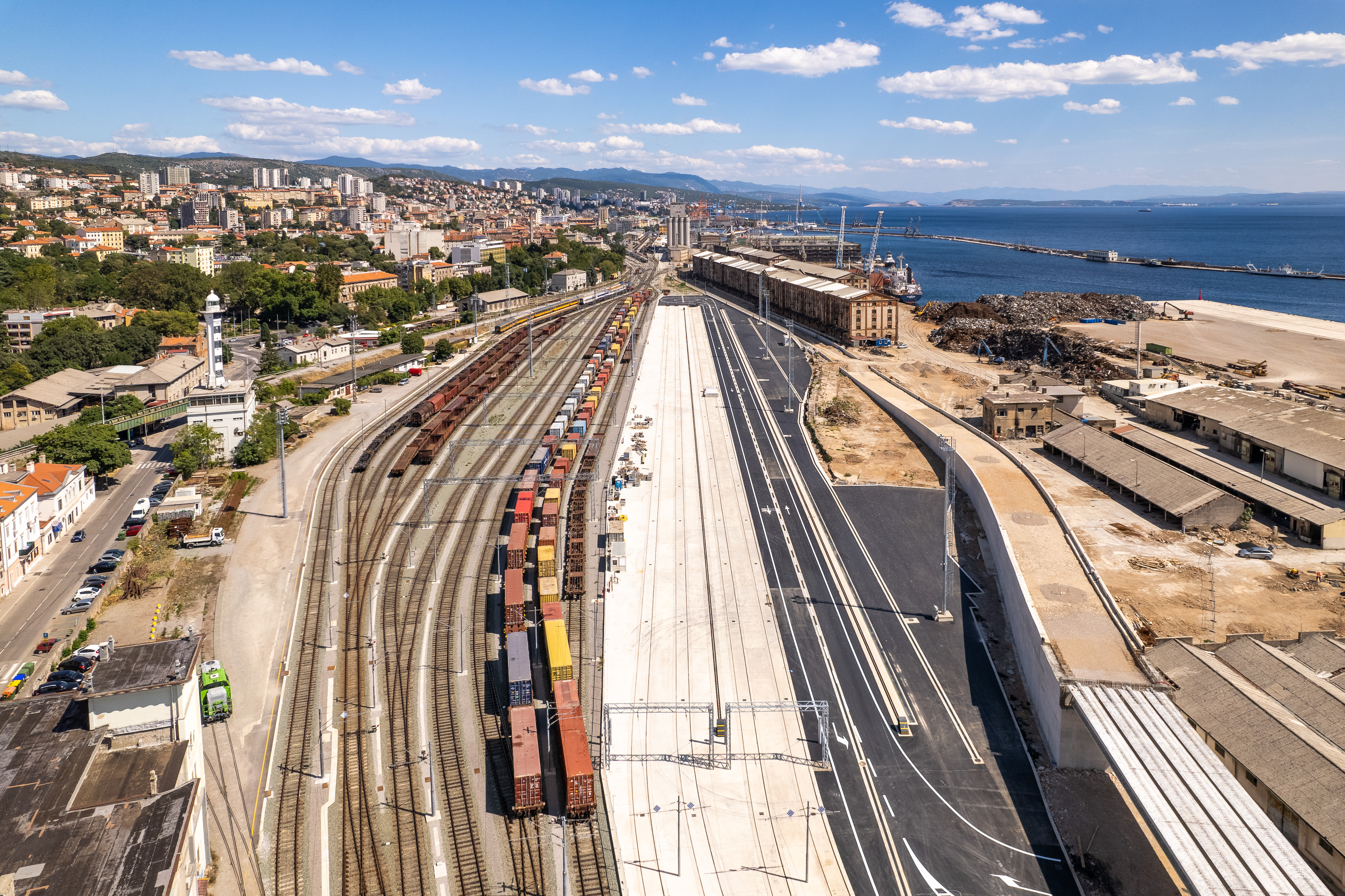
Located in northern Croatia, the Port of Rijeka plays a crucial role as a gateway to Central European markets. With over €25 million in EU funding from the CEF Transport programme, the port’s infrastructure has been upgraded to boost capacity and establish it as a more efficient, sustainable and multimodal hub for cargo transport.
In the Zagreb terminal of the Port of Rijeka, a longstanding bottleneck was eliminated through significant upgrades to rail infrastructure and the development of new interconnections. The cargo section of the Rijeka railway station was modernised to support the new container terminal and accommodate longer trains, enhancing overall operational capacity.
Additionally, the basic port infrastructure was improved with the reconstruction of a 164-meter quay in the Raša basin, one of five key locations within the port of Rijeka. This upgrade has streamlined daily operations, particularly in the loading and unloading of timber cargo.
The modernisation of rail connections has not only increased the port’s freight capacity but has also enhanced traffic management, interoperability, service quality, and safety. These improvements have, in turn, bolstered the economic competitiveness of the region.
Moreover, these projects have strengthened links between the North Adriatic ports of Rijeka, Venice, Trieste, and Koper. Situated along the Mediterranean Corridor, the Port of Rijeka now enjoys better connectivity with the Rhine-Danube and Baltic-Adriatic corridors.
About
Since 2014, CEF Transport has supported over 1,500 projects with a total amount of €37.5 billion. Under the 2021-2027 programming period, €25.8 billion has been made available for grants to co-fund Trans-European Transport Network (TEN-T) projects in EU Member States.
- Project duration
- 1 Oct 2016 - 30 Sep 2022
- Project locations
- Croatia
- Overall budget
- €38 500 000
- EU contribution
- €25 255 00065.6% of the overall budget
